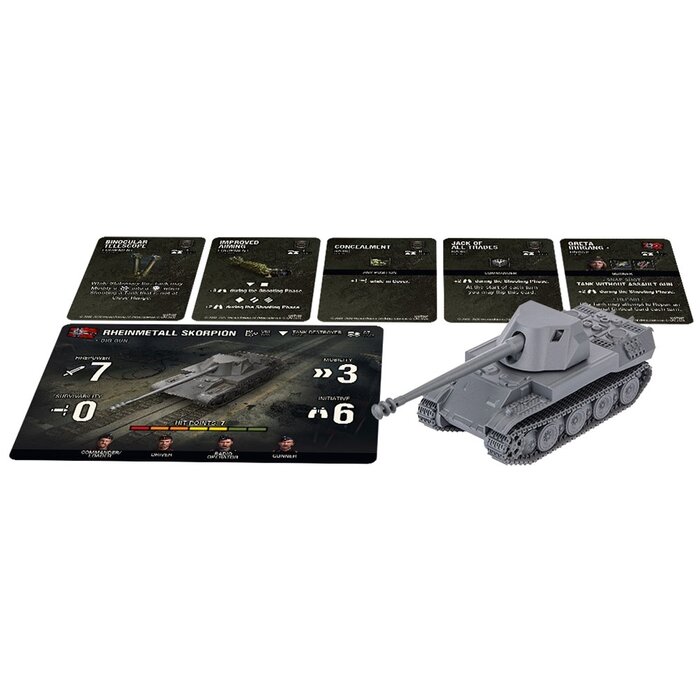Development of the second series of self-propelled guns on the basis of the Panther tank was started by the Rheinmetall company in January 1943. The design plans for the 12,8 cm Skorpion were completed on April 2, 1943. Existed only in blueprints.
The development started in 1948. In 1952 the order was placed for production of 300 vehicles to fight in the Korean War. The tank was designated as M103.
The IS-7 is a Soviet tier 10 heavy tank.
Development of the IS-7 started in the spring of 1945. Prototypes successfully underwent trials in 1946 and 1947. However, the IS-7 never saw mass production.
With its well angled "pike-nose" frontal armor layout and a rounded, highly sloped turret front, the IS-7 is one of the toughest nuts to crack when engaged from the front. If positioned behind a piece of cover which shields its lower glacis plate, it becomes a hardened object with so few weak points that successfully damaging the tank turns into a most frustrating experience. Therein lies a weakness, however - the IS-7 cannot angle its armor, because if it does, the sloping of the frontal plate will become significantly worsened and enable most guns to punch through with relative ease. The side armor of the tank is comprised of spaced plates which are not only small but angled as well, making even perfectly landed shots to the hull's midsection fail to do any sort of damage at times. The rear armor is quite thin, however, and will rarely deflect even lower tier guns. The IS-7 mounts a very potent 130mm S-70 naval cannon as the main gun. While it's potentially high damage output can seem quite formidable, the gun itself is largely inaccurate, has a rather long aiming time, takes a while to load, and is actually much less effective than it seems. Nevertheless, at close and medium ranges the gun can still inflict very serious damage. Sustainability of said damage is difficult, though, due to the aforementioned long reload and aim times.
When compared to its Soviets counterparts, the IS-4, the Object 277 and Object 705A, the IS-7 plays like a middle gap between the IS-4 and Object 277. Despite being hampered by its poor terrain resistance values, the tank is nonetheless mobile enough to keep up with the team and change position if absolutely needed. And due to the aforementioned sub-par gun stats, the player of the IS-7 should use this tank in almost exclusively medium and short range brawler-type combat. Your teammates will rely on you to take and deflect the majority of incoming fire while they in turn support your advance and use their (hopefully) more accurate guns to assist in whittling down the enemy team. Expect to do some heavy lifting when driving the IS-7 and use it's key advantages to fight on your own terms and dictate the flow of the battle, improving your performance and probability of success.
The IS-7 marks the end of its Soviet heavy line.
The Charioteer is a British tier 8 tank destroyer.
The upgraded version of the Cromwell tank. A new turret and a 20-pounder 83.4-mm caliber gun made this tank a potent adversary. According to different sources, between 200 and 442 Cromwell tanks were converted to the new Charioteer standards.
The Charioteer leads to the FV4004 Conway.










